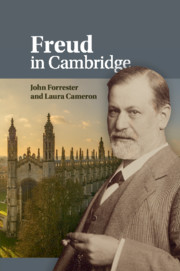Refine search
Actions for selected content:
13588 results in History of science and technology
11 - A Propeller for the Air Age
-
- Book:
- Reinventing the Propeller
- Published online:
- 20 April 2017
- Print publication:
- 24 March 2017, pp 305-344
-
- Chapter
- Export citation
Acknowledgments
-
- Book:
- Reinventing the Propeller
- Published online:
- 20 April 2017
- Print publication:
- 24 March 2017, pp xv-xviii
-
- Chapter
- Export citation
4 - A “New Type Adjustable-Pitch Propeller”
-
- Book:
- Reinventing the Propeller
- Published online:
- 20 April 2017
- Print publication:
- 24 March 2017, pp 75-115
-
- Chapter
- Export citation
Contents
-
- Book:
- Reinventing the Propeller
- Published online:
- 20 April 2017
- Print publication:
- 24 March 2017, pp ix-ix
-
- Chapter
- Export citation
List of Figures
-
- Book:
- Reinventing the Propeller
- Published online:
- 20 April 2017
- Print publication:
- 24 March 2017, pp x-xi
-
- Chapter
- Export citation
7 - No. 1 Propeller Company
-
- Book:
- Reinventing the Propeller
- Published online:
- 20 April 2017
- Print publication:
- 24 March 2017, pp 180-203
-
- Chapter
- Export citation
2 - “The Best Propeller for Starting Is Not the Best for Flying”
-
- Book:
- Reinventing the Propeller
- Published online:
- 20 April 2017
- Print publication:
- 24 March 2017, pp 16-44
-
- Chapter
- Export citation
Discipline building in Germany: women and genetics at the Berlin Institute for Heredity Research
-
- Journal:
- The British Journal for the History of Science / Volume 50 / Issue 2 / June 2017
- Published online by Cambridge University Press:
- 20 March 2017, pp. 267-295
- Print publication:
- June 2017
-
- Article
-
- You have access
- HTML
- Export citation

Freud in Cambridge
-
- Published online:
- 16 March 2017
- Print publication:
- 09 March 2017
Chapter 10 - Kant’s Conception of Causal Necessity and Its Legacy
- from Part IV - Laws in Physics
-
-
- Book:
- Kant and the Laws of Nature
- Published online:
- 31 March 2017
- Print publication:
- 16 March 2017, pp 195-213
-
- Chapter
- Export citation
Part IV - Laws in Physics
-
- Book:
- Kant and the Laws of Nature
- Published online:
- 31 March 2017
- Print publication:
- 16 March 2017, pp 193-234
-
- Chapter
- Export citation
Index
-
- Book:
- Kant and the Laws of Nature
- Published online:
- 31 March 2017
- Print publication:
- 16 March 2017, pp 285-288
-
- Chapter
- Export citation
Chapter 8 - Grounds, Modality, and Nomic Necessity in the Critical Kant
- from Part III - Nomic Necessity and the Metaphysics of Nature
-
-
- Book:
- Kant and the Laws of Nature
- Published online:
- 31 March 2017
- Print publication:
- 16 March 2017, pp 150-170
-
- Chapter
- Export citation
Chapter 3 - Imperfect Knowledge of Nature
- from Part I - The Lawfulness of Nature
-
-
- Book:
- Kant and the Laws of Nature
- Published online:
- 31 March 2017
- Print publication:
- 16 March 2017, pp 49-68
-
- Chapter
- Export citation
Part III - Nomic Necessity and the Metaphysics of Nature
-
- Book:
- Kant and the Laws of Nature
- Published online:
- 31 March 2017
- Print publication:
- 16 March 2017, pp 129-192
-
- Chapter
- Export citation
Chapter 9 - Kant on Mathematical Force Laws
- from Part III - Nomic Necessity and the Metaphysics of Nature
-
-
- Book:
- Kant and the Laws of Nature
- Published online:
- 31 March 2017
- Print publication:
- 16 March 2017, pp 171-192
-
- Chapter
- Export citation
Chapter 13 - The Building Forces of Nature and Kant’s Teleology of the Living
- from Part V - Laws in Biology
-
-
- Book:
- Kant and the Laws of Nature
- Published online:
- 31 March 2017
- Print publication:
- 16 March 2017, pp 256-274
-
- Chapter
- Export citation
Contributors
-
- Book:
- Kant and the Laws of Nature
- Published online:
- 31 March 2017
- Print publication:
- 16 March 2017, pp vii-viii
-
- Chapter
- Export citation
Chapter 2 - On Universality, Necessity, and Law in General in Kant
- from Part I - The Lawfulness of Nature
-
-
- Book:
- Kant and the Laws of Nature
- Published online:
- 31 March 2017
- Print publication:
- 16 March 2017, pp 30-48
-
- Chapter
- Export citation
Copyright page
-
- Book:
- Kant and the Laws of Nature
- Published online:
- 31 March 2017
- Print publication:
- 16 March 2017, pp iv-iv
-
- Chapter
- Export citation
